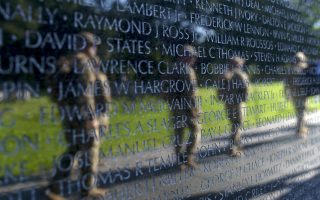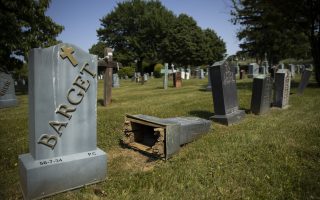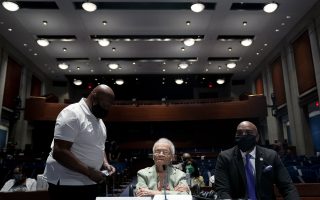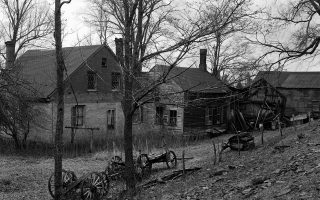After a ‘terrible silence,’ many of NYC’s subway musicians are back
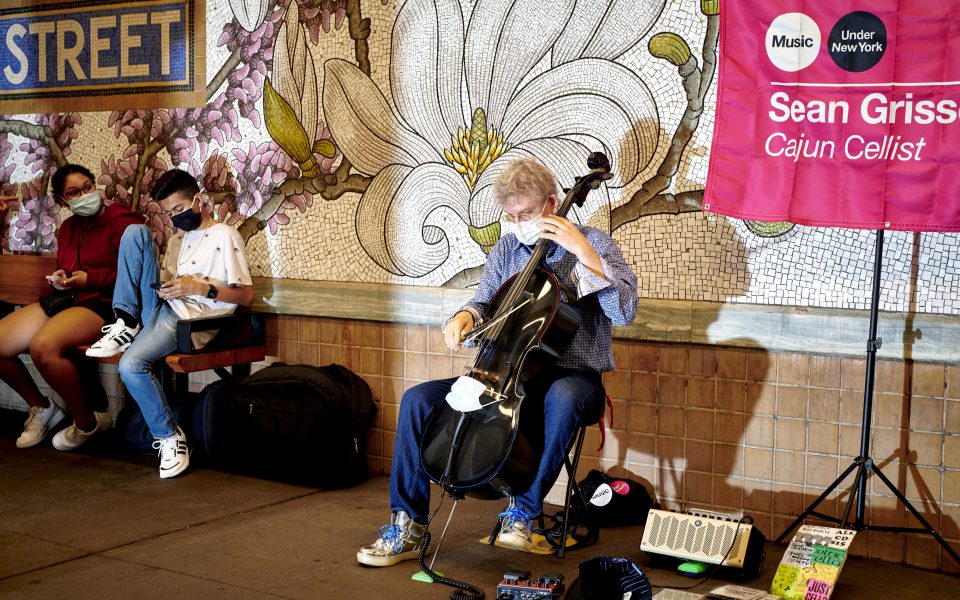
NEW YORK – Sean Grissom hit the stage – the 28th Street stop on the No. 6 train – promptly at noon Friday and played the first notes on his cello just as a clattering train barreled past him and drowned out the music with a deafening screech.
But Grissom, 60, smiled broadly.
He has played in the New York City subway for tips since 1988. But he stopped in March 2020 when the city became locked down during the pandemic. Riders had disappeared from the subways and so had most subway performers, deterred by the danger of catching the virus, and the lack of passengers to play for.
On Friday, after more than 14 months, the music was back.
The Metropolitan Transportation Authority restarted its Music Under New York program, which organizes Grissom and about 350 other performers at some of the most popular underground spots.
Not that the musicians returned to any big crowds Friday. Even with infection rates at all-time lows and ever-more New Yorkers getting vaccinated, many riders are still leery of returning to the subway.
Grissom did not seem bothered that his playing often went unheard and unacknowledged. When one passenger finally threw a dollar into his hat, he stood up and bowed.
“After a year of no applause, I’ll take anything,” he said. “Anything is better than not being able to play.”
That passenger, Kevin Shuker, a 61-year-old physical therapist, said he was glad to see more musicians back on the platforms.
“What’s been missing in New York is the music,” he said. “It gives you the feeling that New York is returning to normal.”
During the worst of the pandemic in April 2020, weekday subway ridership dropped to 300,000 from roughly 5.3 million. Today, it is at roughly 2.3 million riders a day, still well below normal.
Foreign tourists and office workers – both big tippers – have still largely not yet returned, and subway cars and stations still seem dramatically empty compared with the robust pre-pandemic crowds.
The departure of musicians from the subway was profound. That sprawling thoroughfare in the Times Square station, where blues bands and gospel groups often entertained throngs of tourists, was suddenly silent. And at Union Square station in Manhattan, which boasted an offbeat brass funk band and other acts that wowed even the hippest of New Yorkers, most musical acts disappeared as well.
The return of the authority’s music program seemed like a festive opening day and a milestone in the city’s reopening.
“It was a terrible silence,” said Sandra Bloodworth, director of the authority’s Arts & Design program, which presents visual and performance arts in subway spaces. “But it’s sounding like the subway again.”
Of course, there were safety precautions. Decals on the floor around many performing spots bore warnings reminding people to stand 6 feet apart. The authority requires musicians to wear masks and even provided a trumpet player performing Friday a mask with a small hole for his mouthpiece.
Ever the jokester, Grissom strapped a mask across the body of his cello, explaining that “it’s not vaccinated yet.”
New York’s subway system is the largest in the country and the lifeblood of the city, but it is also a performance venue like no other.
For decades, countless musicians have staked out grimy spots on bustling train platforms, next to busy turnstiles, and even inside crowded train cars to play passionately for tips from the toughest of audiences: commuters who are usually too hurried and harried to stop and listen.
Blues bands vie for performance spots and tips with mariachi groups, classical violinists, doo-woppers and beatbox rappers. Famous singers such as Bono and Miley Cyrus have made appearances.
Music Under New York began in 1985 to help codify the often-chaotic process of musicians picking where and when to play. Program officials select the musicians and allow them to book prime locations sanctioned by the agency throughout the system. (Many subway performers are not part of the program.)
Bloodworth said the agency considered restarting the program in September but backed off as infections began to rise with a second wave of the virus.
“But as the vaccine came, we thought, ‘Yes, we’re going to be able to do this,’” she said.
Solo performers returned to 15 of the program’s 35 locations, she said, and on June 14, the authority, which restored round-the-clock subway service starting May 17, will begin allowing group performances at most sites.
Although the authority paused the program, it never barred musicians from playing in the subways, and a small handful continued to show up, even during the height of the pandemic when hundreds of New Yorkers a day were dying.
Some musicians seemed to have incorporated the trauma of the pandemic into their performances.
“It’s been a long journey – some made it, some didn’t,” intoned Charles Davis, 75, of Brooklyn, between songs, as he crooned for commuters near Track 19 in Penn Station. “But music is a healing force.”
Davis has played the spot for 30 years, coaxing applause and tips with soulful versions of songs ranging from Otis Redding favorites to Frank Sinatra standards, and always competing with the crackling track announcements over the public address system.
Musicians who returned to the subways months ago said their earnings have dropped dramatically because of the lack of crowds.
Those who do listen seem to keep a distance, said Inti Paucar, an Ecuadorian immigrant from Queens who Thursday was playing the Andean pan flute in the Herald Square station.
“A lot of people are still afraid to walk up and give us money,” he said, adding that he now makes perhaps $30 a day, roughly a third of his usual take.
Another Andean flute player, Luis Vilcherrez, 52, a Peruvian immigrant who was playing in Union Square on Friday, said he was hospitalized last year because of the virus and remained bedridden for two months. Many friends in his neighborhood, Corona, Queens – one of the hardest hit areas in the city – also got the virus, he said.
Leonardo Love, 63, a Jamaican immigrant from Queens, said he continued to play his tenor saxophone in the subways through the entire pandemic.
“I figured if I died, I’d die doing what I love to do,” he said. “But it was a ghost town down here. The only passengers were people risking their lives by going to work – maids, construction workers, food workers. They told me, ‘Keep playing, keep us going, brother.’”
Some subway musicians took their act outside, for safety’s sake.
Jean-Pelet Matheus, 43, a trumpeter from New Jersey who plays church hymns in a subway corridor near Penn Station, began playing on the street on the East Side of Manhattan.
“The office workers and tourists are still not around, and the blue-collar workers don’t really stop, so I might make maybe 20 or 30 bucks day,” said Matheus, who added that he often sleeps on midtown streets guarding his trumpet from being stolen. “Something is better than nothing, but it’s been very slow.”
But Grissom said that returning to playing in public was uplifting, especially after seeing eight of his musician friends die during the pandemic.
At the beginning of his set Friday, he played the national anthem, which he said was “in honor of the first responders and essential workers.”
As for the thin subway crowds, he was optimistic that would change soon.
“The thing about New York,” he said, “is people always come back.”
[This article originally appeared in The New York Times.]



